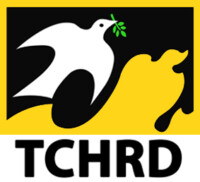TCHRD has translated a letter written by a Tibetan monk, teacher and an activist in Tibet.
Written in August 2012, the letter, sent anonymously from Tibet, was addressed to the Special Meeting held in September 2012 in India. The letter raises important issues about the Tibetan freedom struggle and reveals important details about oppression and resistance in Tibet.
“Therefore, the path the Chinese have laid for us to walk in the meantime is like an ‘invisible dagger,’ Against which we are presumed to have not many alternative strategies.”
Despite being a truly Tibetan voice, in some measure, it is reminiscent of Frantz Fanon’s ‘Wretched of the Earth’ for its power to awaken the consciousness of both the oppressed and the oppressor, which only highlights the universality of human resistance. In one sense, the letter also reflects the Tibetan Buddhist liberation theology, the idea that that freedom is possible through understanding the true meaning of Tibetan Buddhism.
Beyond the Numbers: a Human Perspective on Tibet’s Self-immolations from Katie Lin on Vimeo.
The Tibetan Centre for Human Rights and Democracy (TCHRD) released today a short documentary film on Tibetan immolations that have captured the conscience of many around the world.
Since 2009 in Tibet, 95 Tibetans have burned their bodies to protest against increasing oppression under Chinese rule, calling for the return of their spiritual leader, His Holiness the Dalai Lama to Tibet. They also called for religious freedom, language rights, equality and freedom in Tibet. Some died at mining sites protesting resource extraction, desecration of sacred land and undermining Tibetan spiritual traditions and belief system. Pema Dorjee, the 93rd Tibetan who died of protest self-immolation called for Tibetan land to be governed by Tibetans.

According to information received by TCHRD, two Tibetan men, a monk and a layman, have died after they burned themselves alive in separate incidents in the Tibetan province of Amdo in Tibet.
The day of the burning protests coincided with Ganden Ngamchoe (Festival of Lights), which commemorates the birth and death of the great Tibetan Buddhist master, Je Tsongkhapa.
Pema Dorjee, 23, died after setting himself on fire in Luchu (Ch: Luqu) County of Kanlho (Ch: Gannan) Tibetan Autonomous Prefecture in Gansu Province.
An unknown number of detentions related to protest self-immolations is being reported from areas where Tibetans have carried out continued protest self-immolations, according to reliable information received by TCHRD.
Many of those detained in the aftermath of a protest self-immolation are family members and relatives of the self-immolators, a source with close contacts in Kanlho Prefecture told TCHRD.

A Tibetan father of two who was forcibly taken away by police after his protest self-immolation on 30 November has died at a government hospital in Barkham (Ch: Ma’erkang), capital of Ngaba (Ch: Aba) Tibetan and Qiang Autonomous Prefecture, Sichuan Province.
Kunchok Kyap, 29, self-immolated in protest against the Chinese government at a gas station 10 km away from Shagdom Township in Zoege (Ch: Ruo’ergai) County in Ngaba Prefecture.
A father of one has become the 91st Tibetan to carry out protest self-immolation against the Chinese government since February 2009 in Tibet.

Sungdue Kyap, 29, set himself on fire at around 3 pm (local time) on 2 December on highway no. 213 near Bora Monastery in Sangchu (Ch: Xiahe) County in Kanlho (Ch: Gannan) Tibetan Autonomous Prefecture, Gansu Province.
It is the same spot where on 20 October, a father of two, Lhamo Kyap, 27, died of protest self-immolation.
Three Tibetans have died of burning protests in the last four days ignoring a 21 October notice issued by the prefectural government that offers rewards of 50,000 yuan (U.S. $7,913) for tipping off the Chinese government on “planning and abetment” of self-immolation protests in Kanlho (Ch: Gannan) Tibetan Autonomous Prefecture (TAP), Gansu Province.
In the past four days, Kanlho TAP witnessed three protest self-immolations at Luchu (Ch: Luqu), Sangchu (Ch: Xiahe) and Tsoe (Ch: Hezuo) city.
A Tibetan father of two who self-immolated yesterday taken away along with a group of other Tibetans in Zoege (Ch: Ruo’ergai) County in Ngaba (Ch: Aba) Tibetan and Qiang Autonomous Prefecture, Sichuan Province.
On 30 November, at around 9 am (local time), Kunchok Kyap, 29, set his body on fire in protest against the Chinese government at a gas station 10 km away from Shagdom Township in Zoege County, according to information received by TCHRD.
In one of the major protests witnessed this year in Tibet, about a thousand Tibetan students at Sorig Lobling medical school in Chabcha (Ch: Gonghe) protested against the Chinese government. The protest[i] broke out on 26 November in Chabcha (Ch: Gonghe) town of Serchen County in Tsolho (Ch: Hainan) Tibetan Autonomous Prefecture, Qinghai Province.
The protest lasted for nearly two hours before armed police came to suppress it. Many students were injured in the protest as local armed police forces engaged in indiscriminate beatings. According to some unconfirmed reports, tear gas shell and even gunshots were used to break up crowds of protesters.
A Tibetan nun who died of protest self-immolation on 25 November had left a note, carefully put in an envelope, along with a photograph on which was scribbled this line: “For the benefit of the people of the land of snow, beloved sons and daughters of the land of snow, do not forget you are brave Tibetans of the land of snow.”
Sangay Dolma was a nun from Gonshul Nunnery in Bharkor Village in Dokarmo Township. She died after setting herself on fire in Tsekhog County, the seat of the County government office near Rebkong (Ch: Tongren) in Malho (Ch: Huangnan) Tibetan Autonomous Prefecture, Qinghai Province.
